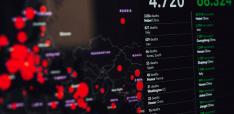This is how to Avoid Climate Crises becoming the Trigger for Social Unrest

-
Post-disaster civil unrest has been historically rare and difficult to quantify, but new research shows that context plays an influential role in determining it.
-
Degrees of government repression, access to basic services as well as propensity to unrest are meaningful determinants of whether natural disaster leads to civil unrest.
-
Food and water security, among other measures, can help mitigate the risk.
Over the past 70 years, only a handful of natural disaster events have precipitated major violence and unrest. The onset of climate change and its expected impact on the frequency and severity of natural disasters, however, could exacerbate the acute resource shortages that tend to lead to riots and other forms of political violence. It is therefore more important than ever to understand the relationship between natural disasters and civil unrest in order to mitigate the risks.
There is no easy fix to this emerging problem, but identifying it in its nascent stages is an important first step. Isolating the factors that indicate post-disaster civil unrest risk – such as propensity for unrest and acute shortages of basic necessities – enable the development of resilience frameworks and plans to support better disaster preparation worldwide.
Link between climate change and civil unrest: Historically rare and difficult to quantify
It is more and more evident that natural disasters are a consequence of climate change, but the link between natural disasters and civil unrest is less documented.
The historical literature on this contains a paucity of data and analysis on the subject. Philip Nel and Marjolein Righarts estimated that 225 natural disasters have involved civil unrest since 1970, with Ide, et al. finding 176 during roughly the same period. Where studies take a look at specific cases, it’s usually the same handful – such as the Aceh tsunami, Thai flood, and the Ancash earthquake in Peru.
To research the causes of post-disaster civil unrest, I looked at more than 13,000 events in the International Disasters Database to see how many major natural disasters since 1970 really led to civil unrest. The 22 events found may not be exhaustive, but are more indicative than the results produced in other studies. The lack of dominant themes in the 22 events may make it seem like there’s no connection between natural disasters and civil unrest. What became quite clear, though, is that context is crucial to identifying the patterns.
Meaningful circumstances
In reviewing the circumstances associated with each clear case of post-disaster civil unrest, the cases where there was a profound change in the ability to access basic necessities such as food, water, and shelter stood out alongside the degree of government repression. In fact, where the resource shortage is acute, sudden, and in sharp contrast with preexisting availability, the risk of post-disaster riot increases. For example, the diversion of resources because of corruption or weak government institutions would be worse than genuine best efforts that take a while. Faith in institutions can help buy time.
Further, degrees of repression or openness in a disaster-affected state can be instructive. Rather than look to the extremes, though, the middle is of greater concern. Open societies are equipped to handle protest and tend to have lower risks of serious grievance and shortages of basic necessities. Violent protest becomes less likely. And at the other end of the spectrum, highly repressive regimes reduce the risk of violent protest through the exercise of greater control.
Sufficient repression to cause grievance paired with enough openness for protest to manifest thus represents the ripe condition for post-disaster civil unrest. Again, though, historical cases are complicated and more than half of the 22 cases studied suggest post-disaster unrest is most prevalent in anocratic environments rather than open or repressive states.
Overall, preexisting civil unrest is the most likely driver. It appears in the majority of the 22 cases I found, although this just means that the acute shortages, grievances, and other institutional problems have been identified as already in place. The natural disaster just becomes the trigger.
How can this be fixed?
Disaster-induced civil unrest may have been rare historically, but that seems likely to change – even in the near future. Climate change is likely to drive an increase in natural disaster frequency and severity. This elevates the threat environment. More natural disasters mean more opportunities for civil unrest to be induced. Even if the rate at which natural disasters leads to civil unrest remains low, the absolute total would increase.
Climate and societal risks are becoming more and more volatile. New aggravating factors have come into the mix. Solutions needed to address the combined threat of natural disasters and civil unrest are long-term, speaking to a near-term problem. Battling corruption and strengthening weak institutions occurs over decades and has to overcome often stiff domestic resistance.
However, civil unrest does not arise easily. It requires a change in the opportunity cost associated with inaction. Even where access to basic necessities can be difficult and where governments are repressive, fear of the unknown is not easily overcome, which makes that opportunity cost difficult to change. For civil unrest to arise, the unknown has to be preferable to the status quo. Instead of waiting for that change, food and water security measures now can prevent the risk of acute shortage later. Even a few steps in the right direction can breed confidence in further progress, which can help mitigate the risk of civil unrest. The challenge is that progress needs to be continual. Lost momentum brings back the risk.
Thomas Johansmeyer, Head, Property Claim Services (PCS), Verisk.
This first appeared on the Agenda blog.
Photo by Pexels User


